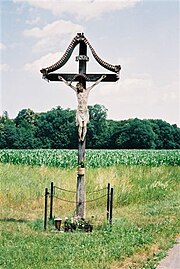
The "way of beauty" is the theme of the Pope's recent address to artists on 21 November 2009 in the Sistine Chapel. In it he writes - quoting both Hans urs von Balthasar and Simone Weil, who are influences on the book on which this blog is based (see left), and building on the Letter to Artists of Pope John Paul II - as follows: "Beauty, whether that of the natural universe or that expressed in art, precisely because it opens up and broadens the horizons of human awareness, pointing us beyond ourselves, bringing us face to face with the abyss of Infinity, can become a path towards the transcendent, towards the ultimate Mystery, towards God.... In this regard, one may speak of a 'via pulchritudinis,' a path of beauty which is at the same time an artistic and aesthetic journey, a journey of faith, of theological enquiry.... Simone Weil wrote in this regard: 'In all that awakens within us the pure and authentic sentiment of beauty, there, truly, is the presence of God. There is a kind of incarnation of God in the world, of which beauty is the sign. Beauty is the experimental proof that incarnation is possible. For this reason all art of the first order is, by its nature, religious.'"
The Pope has also recently spoken very eloquently of the beauty of the medieval cathedrals, one of which, the Cathedral of Orvieto, is featured in the photograph. There he speaks of "a much broader form of reason, in which the heart and reason come together. This is the point. This, I think, is in some way the proof of the truth of Christianity: the heart and reason come together, beauty and truth touch. And to the extent that we are able to live in the beauty of truth, so much more will faith again be able to be creative, in our own time as well, and to express itself in a convincing artistic form."


